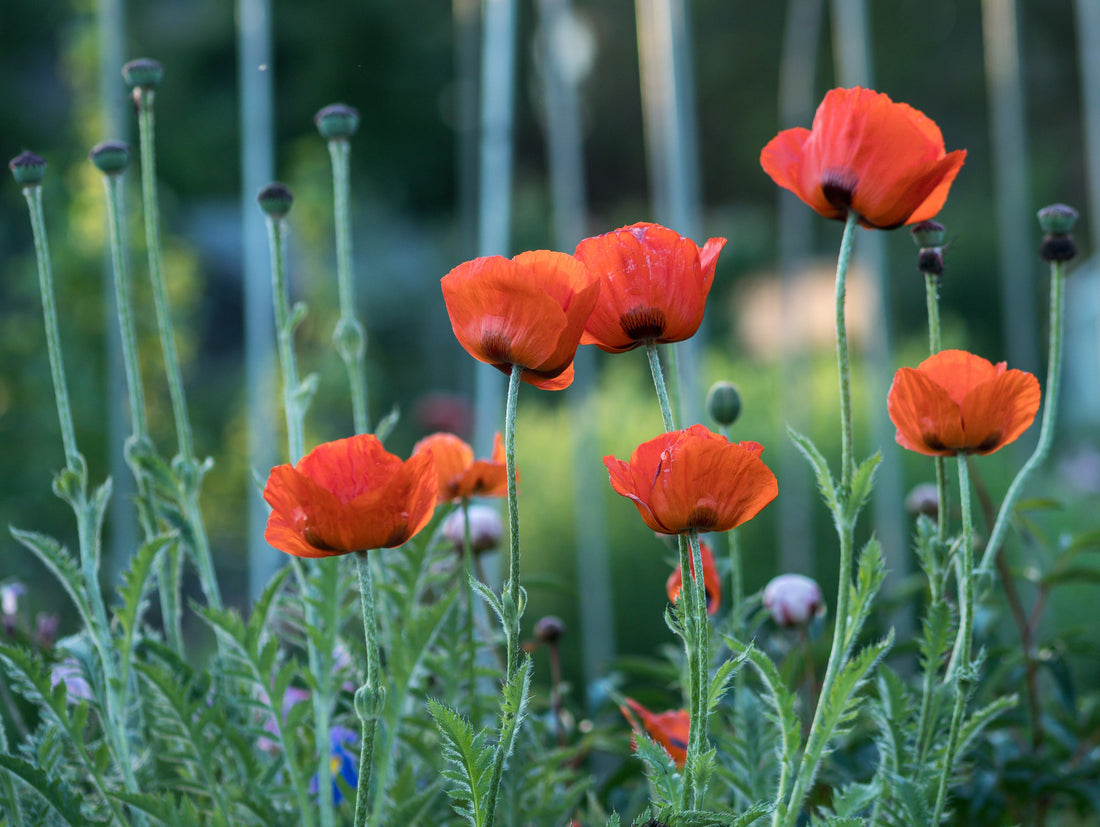Poppy (Papaver orientale)
The diva among showy perennials! An eye-catcher that's guaranteed to attract attention in any garden during its blooming season. This perennial belongs to the poppy family and is one of the most persistent of its kind. With its delicate yet magnificent appearance, the Turkish poppy is a true highlight of the garden year. It looks especially striking when paired with columbine, catnip, or lady's mantle.

Growth form
The clump-forming poppy is, apart from the flowers, completely covered in bristles. It has long, lanceolate, pinnately divided leaves (up to 30 cm) and reaches a height of 40–100 cm. After flowering, it dies back and then sprouts again in the fall.
blossom
The flowering period from May to June is relatively short, but worthwhile nonetheless. The bowl-shaped flowers, up to 15 cm in size, are each surrounded by four delicate, silky petals. The center forms a wreath of black stamens. The color palette is very broad thanks to numerous hybrid varieties. While the color range of the original is limited to orange to blood red, the color spectrum of the hybrid varieties includes, in addition to the numerous shades of orange and red, white and even brown-violet. Some are also available with decorative spots. Once the bud has opened, the flowers are short-lived and only bloom for a few days. After flowering, however, a capsule fruit about the size of a walnut forms, which also makes a stunning display.
Location requirements
Poppies require a full sun location with well-drained, and above all, deep soil, as the roots of this perennial species reach particularly deep. In windy locations, it is recommended to plant only low-growing varieties of the Turkish poppy. One to two plants are needed per square meter. They should be planted 50 to 80 cm apart.
Care
The best time to plant Turkish poppies is in autumn. Because they die back in midsummer and don't sprout again until autumn, a bare-looking spot in the bed can appear in the meantime. Therefore, it's a good idea to choose neighbors that will at least partially cover this spot (e.g., phlox or coneflower). In early summer, after flowering, the perennial should be cut back completely, but the wilted yellow foliage should not be removed until summer. Otherwise, the Turkish poppy is very easy to care for, long-lived, and content with the occasional addition of compost. It generally doesn't mind the occasional drought. However, if you want to do your poppy a favor, you should protect it from snails.
TEXT: Swantja Holtmann





































































































